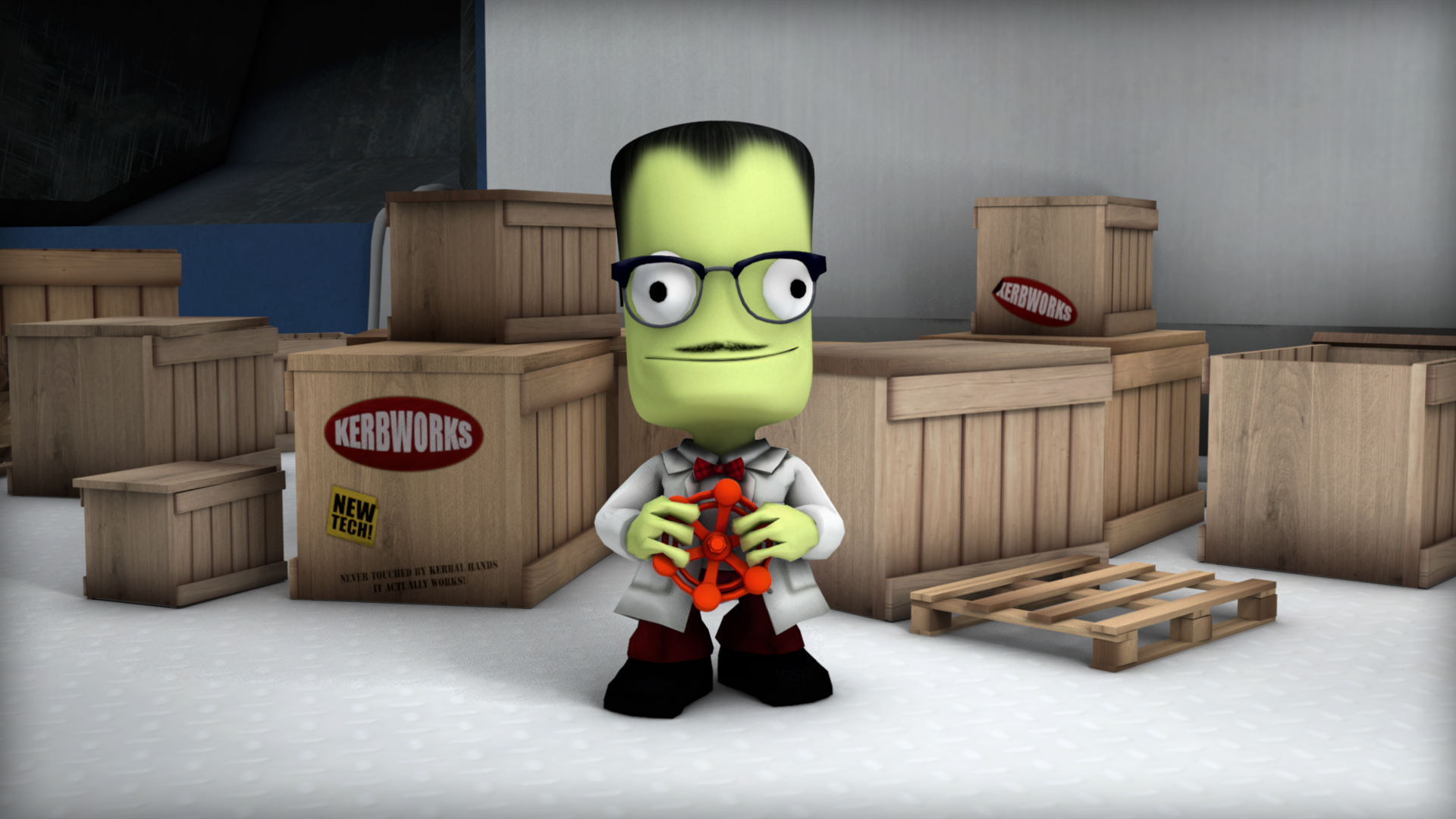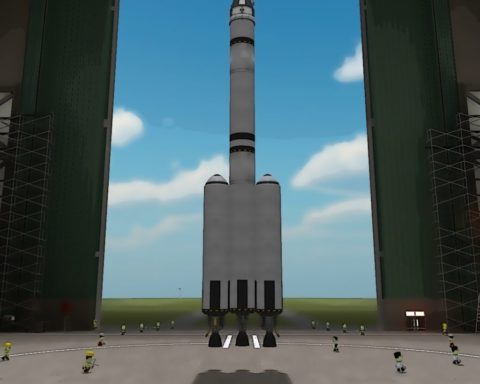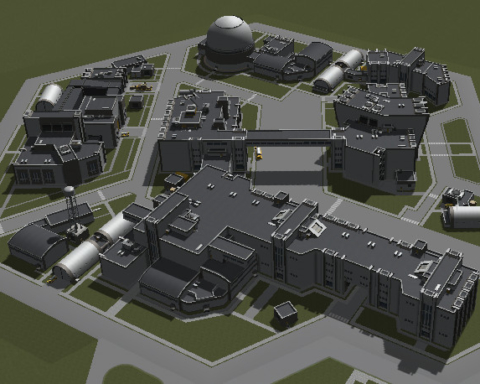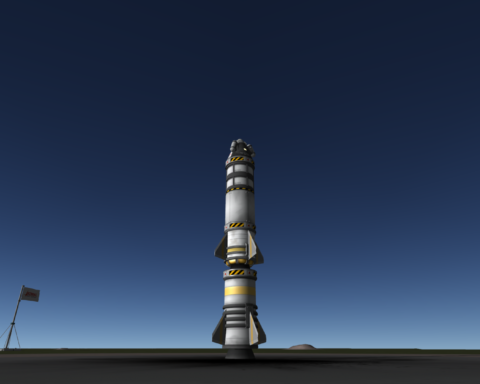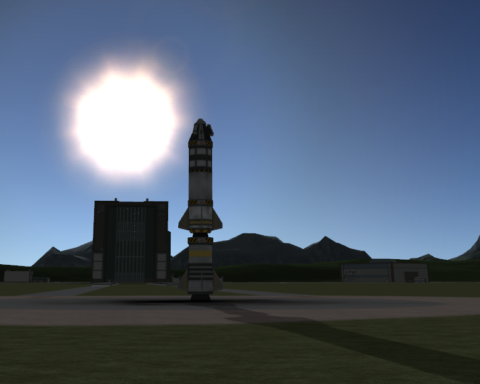In the afterglow of the excellent Mark Two mission, we asked Wernher von Kerman (no relation), the Kerbal Space Center’s lead scientist, what plans the center had for future flights (Mark Two Mission a Complete Success, CommNetNews). “I might have some ideas on how to proceed,” he replied. We caught up with him to find out exactly what technologies are being worked on, and what some of these ideas of Wernher’s might be.
I might have some ideas on how to proceed.
-Wernher von Kerman
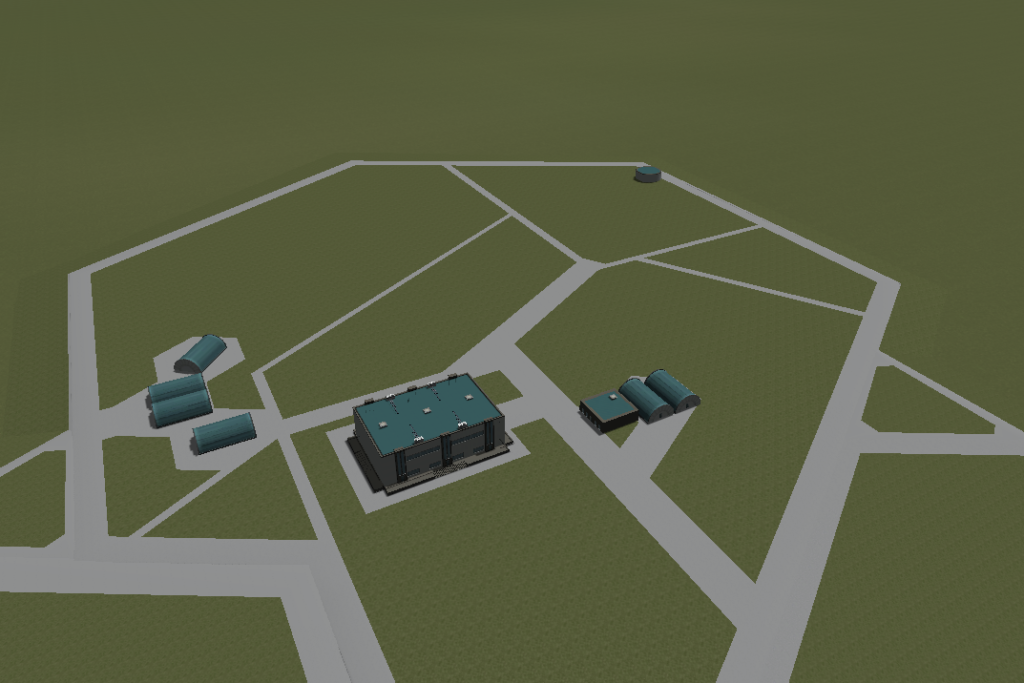
The Research and Development Facility is located in the south west corner of the Kerbal Space Center. Inside, there are multiple labs, research areas, and machine shops. Much of the equipment and projects are classified, but we were allowed to report on some very exciting things we should be seeing in the space program soon.

The most remarkable new development we were shown was an entirely new kind of rocket motor, the LV-T45 “Swivel” Liquid-fueled engine. Unlike the RT-5 Solid Rocket Booster used in the Mark One and Mark Two missions, the “Swivel” works on a completely different principle. Solid rocket boosters have no moving parts, and once lit, let the boom out either slowly or all at once. Liquid rockets, on the other hand, are ferociously complex- containing thousands of parts, many whirling about at extraordinary speeds. Unlike solids however, they can vary their thrust from a little to all of it, and can be swiveled (hence the “Swivel” designation) to aim the vehicle in different directions, thus allowing the craft to be steered.
Once the LV-T45 was developed, it was realized that there was a need for somewhere to put all the fuel, so the team got their hands on a storage tank. Naming it the FL-T100, the team feels that it will work to fuel the “Swivel” for some time. They are all curious to find out just how long that time is.
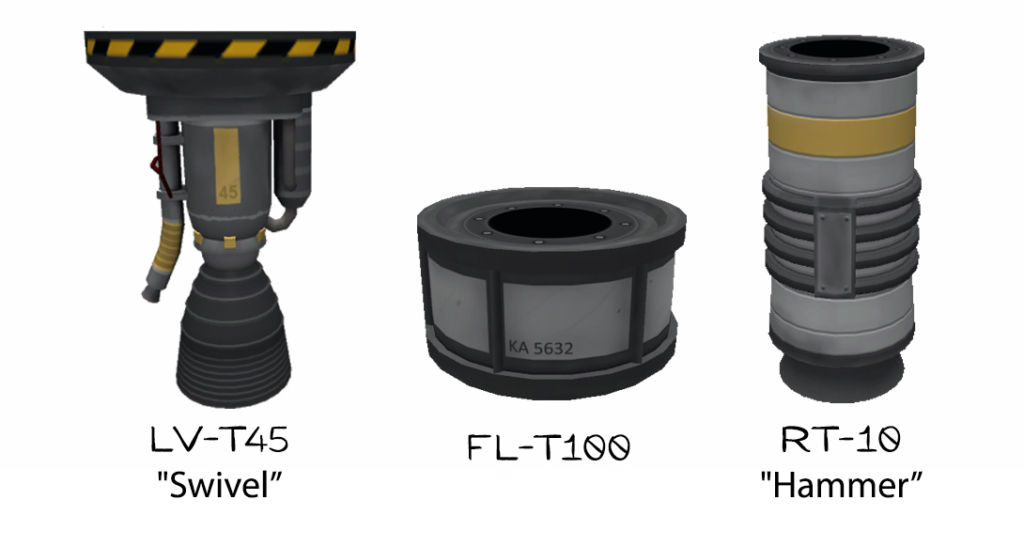
The solid rocket motors have not been ignored, though. A new, larger booster has been developed, the RT-10 “Hammer” Solid Rocket Booster. Essentially a double-sized version of the RT-5, with twice the length, fuel load, and performance. The team expects this to be about twice the cost of the RT-5 as well.
On both the Mark One and Two missions, Jebediah Kerman (no relation) reported that the capsule seemed to be suffering from insufficient thermal protection between the Mk1 Capsule and the RT-5 solid rocket booster. To verify this, the 2HOT Thermometer has been developed. This will take readings of the temperature at various points in a spaceflight. We were assured multiple times that this unit was definitively not a store-bought model with some wires stuck to it.
It was also noted during the Mark Two mission that communications became rather spotty while the craft was at it’s maximum altitude. The radios were designed to go five or six kilometers, but the craft reached an altitude of over eight. Therefore a more powerful radio has been developed, in both an extendable whip style, known as the Communotron 16, as well as a fashionable horizontal stubby style dubbed the Communotron 16-S.

The most experimental item we were shown was the TR-18A Stack Decoupler. While discussing the data recovered from the Mark Two flight, one of the engineers wondered what would happen if they put a rocket on top of a rocket. Wernher von Kerman pointed out that there would need to be a way to cut the rockets apart if they were going to attempt this, and so the TR-18A was born. This technique now referred to as “Scheduled Disassembly.” The TR-18A Stack Decoupler is equipped with a (hopefully small) explosive charge, that will sever the structural linkage between itself and whatever it’s connected to. After a few remarkable incidents in testing, the TR-18A now has handy arrows painted on its sides, indicating which side will detach.

We look forward to seeing some of this new technology integrated into the next generation of spacecraft.


